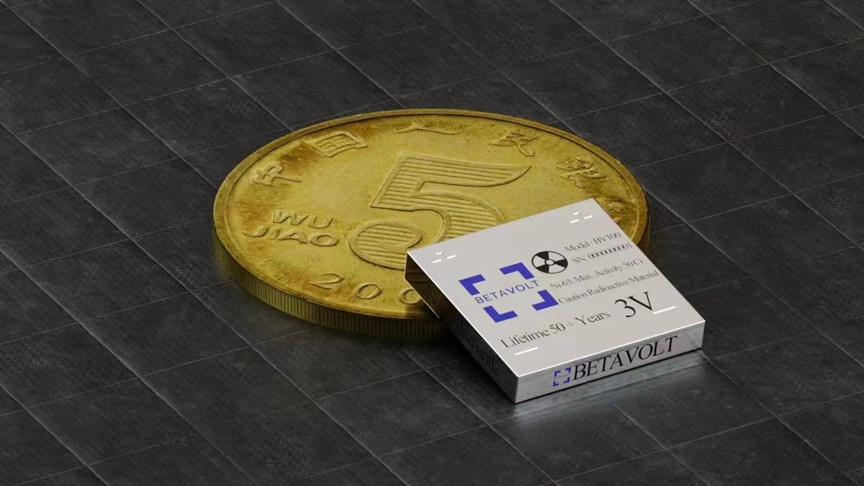
Betavolt recently said it developed a 100-microwatt nuclear battery and plans to release a 1W version next year. (Image Credit: Betavolt)
A Beijing-based startup, Betavolt, says it developed BV100, a small 100-microwatt/3V nuclear battery that can run for 50 years without requiring a recharge or any maintenance. The company said the BV100 is in the pilot testing stage and expects to be mass-produced. It also claims that a 1W nuclear battery is on the way next year for smartphones and drones.
This battery has two single-crystal diamond semiconductor convertors (10 microns thick) with a nickel-63 isotope layer (2 microns thick) sandwiched between the two. First, it passes beta particles (electrons) released from the isotope-Ni- 63 to the semiconductor layers. The diamond semiconductor converters then transform this decay energy, which produces heat, into an electric current. Overall, this is one separate unit, and the capacity can increase by connecting hundreds of independent units in series or parallel. For example, a 2.5W device would need 25,000 of these batteries to power it.

The battery comes with two single-crystal diamond semiconductor converters and a nickel-63 isotope layer. (Image Credit: Betavolt)
Eventually, the nickel-63 isotope decays into copper, giving it a half-life of 100 years. But after its 50-year lifespan, the battery would only output 133 Kilojoules, with the power output decreasing during that time (70.7% stays intact), causing the wattage to drop. And it wouldn’t harm the environment once decayed. According to Betavolt, this means nuclear batteries won’t need a costly recycling process.
Everything is stored within a protective casing that ensures radiation won’t leak out and keeps it protected from damage. Nuclear batteries are different than electrochemical batteries. For one thing, they don’t have charging/discharging cycles, allowing self-power generation for 50 years, and the company claims their energy density is ten times higher than lithium batteries. Also, the power generation remains stable and unaffected despite the load and harsh environment.
However, the battery doesn’t have any practical use cases because it has very low wattage (0.0001W). That’s insufficient for a pacemaker, backlight, alarm clock, etc. Looking at it from this perspective, you can tell that it won’t be better than a coin battery. And it’s not possible to promptly boost the radioactive source output.
Have a story tip? Message me at: http://twitter.com/Cabe_Atwell
